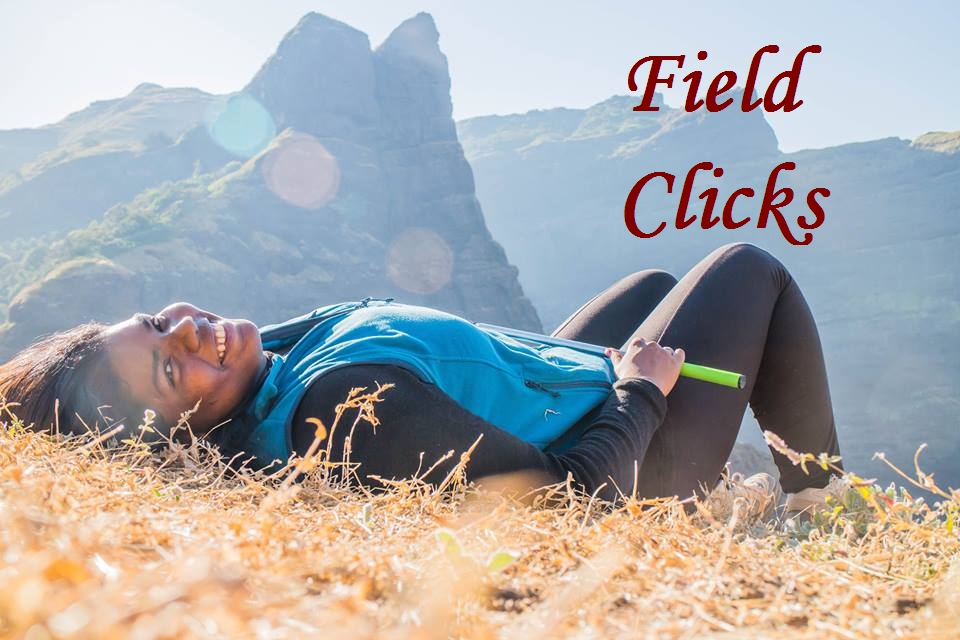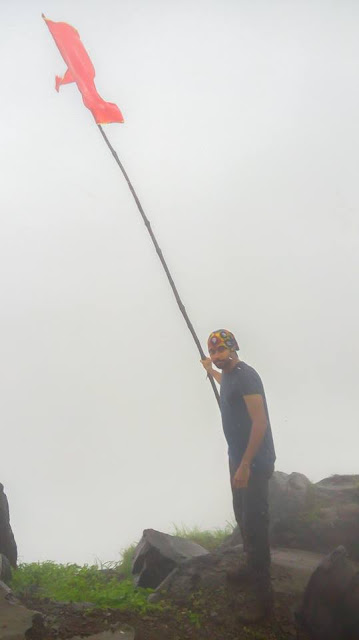Listed at no 11, amongst the 33 most beautiful abandoned places in the world, Kalwantin ( also called Kelve Teen or Kalavantinicha Sulka) is an old fort , at a height of 2300 feet above the sea, very near the Prabalgad (earlier called Muranjan) Fort , which was actually built to keep an eye on the ancient ports (then) of Panvel and Kalyan.
"Sulka" in Marathi means "cone or spire" and the shape of this mountain explains it all . It dates back to 500 BC, to the days of the Shilahar and Yadav dynasties, and the Bahamani Empire, passing through various rulers like the Adilshah and Moguls, till Shivaji finally captured it in 1658 , and gave it the name Prabalgad.
Kalawantin Fort is opposite to Prabalgad on the same stretch of plateau, and both the forts are visible from the Mumbai-Pune Expressway. From the peak of Kalawantin, you can see Matheran, Chanderi, Peb , Karnala Forts, and even the lights of Mumbai City. History has it that some smitten King , built this for his queen called Kalavantin, to ensure that she stayed with him. Today, the Adivais folks of the Prabal Plateau (Machi) celebrate each Holi festival with a traditional dance atop the peak of Kalawantin Fort.
Today, Panvel is no longer a port, and is a significant city that one must cross by road, before climbing the Ghats. This was our meeting point, and we traveled at dawn by the Mumbai suburban trains, to reach Panvel at 7 am. The plan was to breakfast at Panvel, and travel by public transport , to Thakurwadi village at the base of Kalawantin from there and attempt a climb.
The special feature of Kalawantin Fort, is its extreme vertical climb, with sheer drops on all sides, and the ancient stone steps cut into the mountain all along the way . No railing on the edge and no ropes on the wall. They call it "Stairway to heaven !".....
They have called it one of the 33 most beautiful abandoned places in the world.
But it will not be so. Abandoned, that is. Nilesh Bhutambre , the first and only Adivasi lad from the Machi Prabal village, half way up the mountains, who went to college and graduated , now provides, Food, Lodging and Guide facilities to folks wishing to visit the area, do treks etc. Check out Kalavantin Durg and Prabalgad Darshan .
Our trek.
A view of the Prabalgad and Kalwantin Forts before we attempt climbing via the rock cut steps (no fence/railing) with very high slope. The elevation of this fort is not high, just 2300 feet, but the gradient is very high, and the steps challenging.
Inching closer to the objective, on the Prabalgad Plateau (Machi) , which holds both the forts.
The approach to the Kalawantin Fort is via pathways like this that circle around the spire shaped mountain.
Members of our trek climbing. Several first time trekkers, encouraged by those who are more experienced.
A typical path created by the centuries of footfalls .
And the trekkers make their way, across several streams fed by rain waters, jutting rocks , and trees in amazingly useful places, giving you a hand .
Our group taking a breather . Other members of the trek follow.
A typical clearing on a plateau en route, created by the local Adivasis. This will no doubt be covered by some kind of tarpaulin, as the monsoon advances, or it could be that someone plans to run a stall here offering some simple food, and removes stuff when not in use.
Rock structures breaking our monotony as we climb around the cone like structure of the mountain. Naturally, everyone wants to climb and pose.
A sheer vertical fall all around, and massive winds at this point. A fellow trekker looks a bit disgusted at our delight and posing in the wind.
Just to give an idea of how elevation changed over short horizon distances. We climbed on.
A view of the valleys as we inch closer to the top. The lush foliage looks darker due to huge amount of rain clouds approaching and surrounding us.
Another view .
A Hanuman temple with a Ganpati, both defined in vermilion, somewhere on the plateau. Worshiped by the Adivasis . While the stone relief depicting the Gods, may be ancient , the vermilion and the words are clearly modern. Except when it is about God, we do not call it graffiti.

One of the ancient caves (this Durg dates back to 550 BC, during the Satvahana dynasty ) that still stands to this day.
Another view of the approaching monsoon clouds from somewhere close to the top.
The mighty mountains, resplendent in monsoon greens, surrounding the spiky Kalawantin Durg peak.
An actual capture of the verticality of the peak ( very difficult to climb, not for those prone to vertigo) , and the amazing cutting of steps into the mountain so many centuries ago, by those who wished to use this mountain Durg as a lookout point for defense and security reasons.
Now very close to the actual Kalawantin peak. The climb to the top, has no steps, and is a fairly difficult climb through a narrow rock face gap. Made possible by trekkers helping out each other.
This is how it feels to be in the cloud as they bring rains to the valley. Amazing sights and visuals and I was lucky to capture this .
The unfortunate side effect of trekking now being popular is one runs into several groups doing the same thing that you are, and the Kalawantin peak can hold only so many folks at a given time. This is what was happening at midday, 2300 feet above sea level, in the middle of approaching monsoon clouds. Can anyone be blamed for suddenly remembering the Mumbai suburban train crowds building up...
The view at the top. Clouds blocked our view of the valley and other peaks, but it was fun trying to have lunch at the peak.
A typical feature at the top of all our forts in Maharashtra is the saffron flag that flies at the top, celebrating Shivaji Maharaj. A member of our trek posing at the peak.
Rock cut steps, a heavy gradient, and slippery mud, make descent more difficult than ascent. A capture of the nature of the steps as they wind around the cone shaped structure of the mountain, unfenced and without any railing type structure, often narrowing dangerously in some parts, with sheer vertical falls on one side .
Another view .
Somewhere , lower down, there are places to rest amidst flowing mountain streams. The trekkers taking a breather. Me in black.
My faithful boots that tolerated the slush, the rain, the steps, and my weight.
Like us, they are on their way...... through the greens.






























I don’t know how should I give you thanks! I am totally stunned by your article. You saved my time. Thanks a million for sharing this article.
ReplyDeleteHello,
ReplyDeleteWe have started trekking for a social function.
Why trek with us?
The profits on this trek will be made for castle conservation and environmental conservation. We want to experience the history of Chhatrapati Shivaji Maharaj along with cleaning and planting of the fort. So let's go on an adventure! You can see all our information at the following website
https://www.heavenadventure.com/
So please request that you take our trekking event to your website.
Thanks!